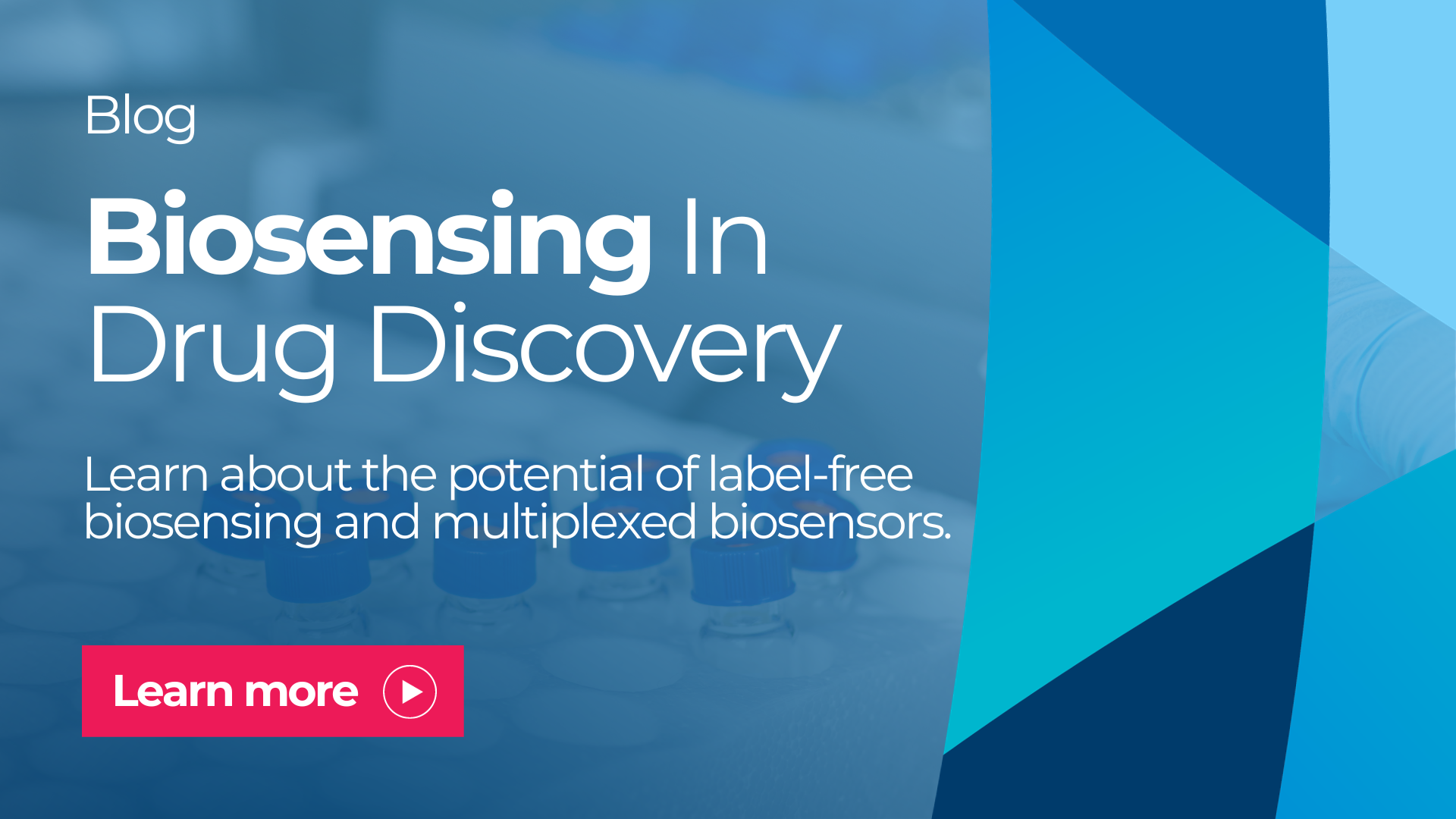In life science research and drug discovery, biosensing technology is a pivotal innovation. This blog dives into the expansive potential of biosensing, particularly emphasizing the groundbreaking impact of label-free biosensing. We’ll also explore how multiplexed biosensors enable the detection of multiple interactions within the same sample, thereby transforming high-throughput screening.
What is Biosensing?
Biosensing involves detecting and measuring biological molecules via sophisticated biosensors. These devices combine biological recognition elements (like enzymes or antibodies) with transducers (like electrodes or optical systems) to convert biological interactions into quantifiable signals. Biosensing’s diverse applications range from clinical diagnostics and environmental monitoring to groundbreaking drug development.
What is Label-Free Biosensing?
Traditional biosensing methods often require labels (fluorescent or radioactive) for molecular identification. However, label-free biosensing changes the game by directly detecting biomolecular interactions, eliminating the need for labels. This approach preserves the natural behavior of biomolecules, offering more accurate insights.
Applications of Label-Free Biosensing in Drug Discovery
Label-free biosensing significantly influences life science research and drug discovery. Its primary use is in analyzing biomolecules’ binding kinetics, which is essential in selecting antibodies for therapeutic or diagnostic purposes. Label-free biosensors enable precise screening of antibodies, assessing their binding characteristics to specific targets.
Multiplexed Biosensors & High Throughput Screening
The advantage of multiplexity in high throughput screening is profound, especially in drug discovery. High throughput screening is used to conduct millions of chemical, genetic, or pharmacological tests rapidly. The goal is to identify active compounds, antibodies, or genes that modulate a particular biomolecular pathway. The traditional approach to screening involves testing one drug target or condition per experiment, which can be time-consuming and resource-intensive.
By employing multiplexed biosensors, it’s possible to have concurrent analysis of multiple samples against various targets. This saves time by reducing the number of individual tests needed and provides a more comprehensive understanding of how different compounds interact with multiple biological targets at once. This comprehensive data is invaluable for identifying potential effective drug candidates with minimal side effects.
For instance, a multiplexed biosensor could assess how a compound interacts with different cellular receptors, enzymes, and proteins in a single experiment. This holistic view can quickly highlight any adverse cross-reactivity of the compound, which is crucial for drug safety.
Delta Diagnostics Enhancing Research Capabilities
Biosensing, especially label-free biosensing, revolutionizes life science research and drug discovery. With Delta Diagnostics at the forefront, detecting more interactions in a single sample, and advancing high throughput screening, the future of healthcare and scientific exploration looks promising.
Using multiplexed biosensors in high throughput screening by Delta Diagnostics marks a significant advancement in drug discovery. By enabling the simultaneous analysis of multiple interactions, these biosensors accelerate the process of identifying potential drug candidates and enhance the depth and quality of the data collected, leading to more efficient and effective drug development pipelines.
Our DeltaOne elevates label-free biosensing with advanced technology, detecting numerous interactions simultaneously within a single sample. This capability provides richer data from individual experiments, enhancing understanding of biological processes. It also streamlines the antibody selection process, saving time and resources.

